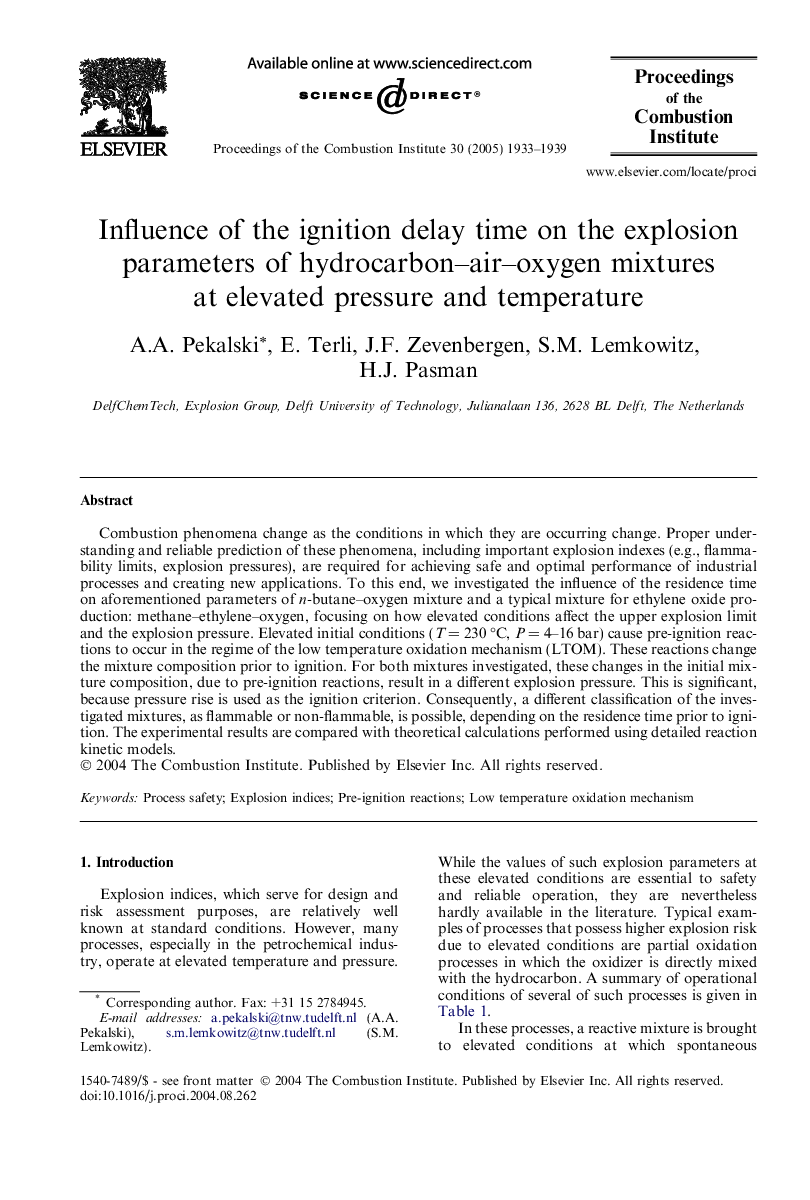| Article ID | Journal | Published Year | Pages | File Type |
|---|---|---|---|---|
| 240934 | Proceedings of the Combustion Institute | 2005 | 7 Pages |
Combustion phenomena change as the conditions in which they are occurring change. Proper understanding and reliable prediction of these phenomena, including important explosion indexes (e.g., flammability limits, explosion pressures), are required for achieving safe and optimal performance of industrial processes and creating new applications. To this end, we investigated the influence of the residence time on aforementioned parameters of n-butane–oxygen mixture and a typical mixture for ethylene oxide production: methane–ethylene–oxygen, focusing on how elevated conditions affect the upper explosion limit and the explosion pressure. Elevated initial conditions (T = 230 °C, P = 4–16 bar) cause pre-ignition reactions to occur in the regime of the low temperature oxidation mechanism (LTOM). These reactions change the mixture composition prior to ignition. For both mixtures investigated, these changes in the initial mixture composition, due to pre-ignition reactions, result in a different explosion pressure. This is significant, because pressure rise is used as the ignition criterion. Consequently, a different classification of the investigated mixtures, as flammable or non-flammable, is possible, depending on the residence time prior to ignition. The experimental results are compared with theoretical calculations performed using detailed reaction kinetic models.
